Antibiotic Vial Production Line
The introduction of Qualipak’s Antibiotic Vial Production Line: To Change the way pharmaceuticals are made, save energy and preserve valuable time. Our state-of-the-art system assures sterile antibiotics with a guarantee of high-quality bottles matching seamlessly to industry standards. Qualipak’s advanced solutions will increase productivity and streamline operations. Upgrade your production line today for unprecedented performance and customer happiness.
-
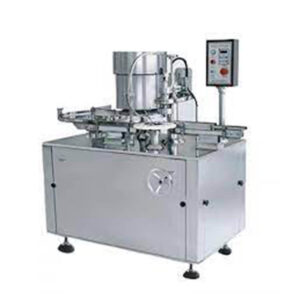
KGL-1 Capping machine
View Machines -
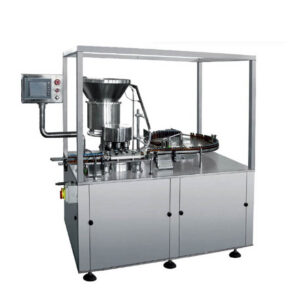
KGL High Speed Capping Machine
View Machines -
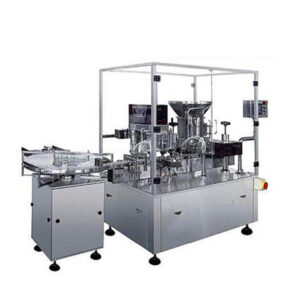
FG-KFS2-B Powder Filling Machine
View Machines -
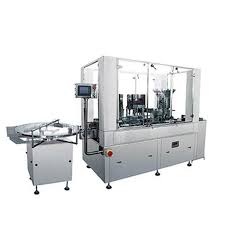
KFG4 Powder Filling Machine
View Machines -
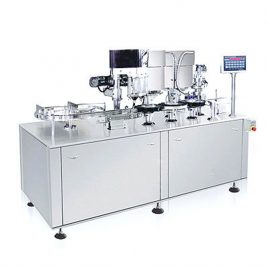
KFG2-B Screw Powder Filling Adding Stoppers And Aluminum Capping Machine
View Machines -
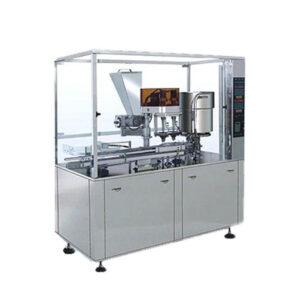
KFG2-A Powder Filling And Stoppering Machine
View Machines
Introduction Antibiotic Vial Production Line
Countless lives have been saved in recent times by the use of antibiotics which are used to fight bacterial infections. Antibiotics’ production requires precision and adherence to rigorous quality standards that guarantee their effectiveness and safety. The creation of antibiotic vial production lines with different types, working processes, applications, functions, benefits, future trends, maintenance and training protocols is crucial to this process. This detailed guide goes through each of these aspects one by one as it exposes the complexities involved in antibiotic vial production.
Different Kinds of Antibiotic Vial Production Lines
There are various antibiotic vial production lines for different scales of production and several requirements. Below are some common types:
Automated Production Lines
Advanced robotics and machines streamline manufacturing in automated production lines with high throughput, efficiency and precision features. Among other things, automated systems perform tasks such as filling vials; capping, labelling and packaging among others with minimal human intervention thereby reducing chances of contamination or human errors.
Semi-Automated Production Lines
Semi-automated production lines combine manual labour with automated machinery whereby certain tasks like filling or capping are done by machines while inspection; quality control and packaging are done by human operators. Semi-automated lines can be more flexible and more suitable for smaller-sized operations or products with specific needs.
High-Speed Production Lines
High-speed production lines aim at large-scale manufacturing where many vials can be processed within a short time frame. These incorporate fast and efficient machinery allowing quick productions without compromising on quality. High-speed lines are mostly applicable in pharmaceutical companies that have significant production demands.
Small-Batch Production Lines
The small-batch type of product line is a niche market that caters to specialty pharmaceuticals with low demand volumes for variations in drug formulas or strengths such as pediatric doses. Small-batch product facilities allow manufacturing flexibility when changing from one formulation (antibiotic) to another within shorter periods due to their portability. In addition, such facilities can be conveniently used to manufacture low quantities of antibiotic drugs and for research and development purposes (R&D).
Working Processes of Antibiotic Vial Production Lines
Antibiotic vial production lines consist of several interrelated procedures that convert raw materials into finished vials ready for distribution. They include:
Formulation and Preparation
The formulation process entails mixing active pharmaceutical ingredients (APIs) with excipients and other substances to create the antibiotic solution or powder. This entire process demands accurate measurements according to formulation protocols as a way of ensuring that the final product is both potent and stable.
Vial Filling
During vial filling, the formulated antibiotic solution is carefully poured into sterile vials. Automated filling machines utilize volumetric or gravimetric methods to achieve precise dosing while minimizing the risk of contamination. Vials are typically filled under aseptic conditions within a controlled environment to maintain product integrity.
Capping and Sealing
After being filled, vials are sealed with sterile caps or stoppers so that they do not get contaminated and remain sterile. Capping machines apply caps with consistent torque to ensure proper sealing without damaging the vial or compromising integrity. Some production lines incorporate additional sealing methods, such as crimping or induction sealing, depending on the vial type and requirements.
Labelling and Packaging
Following capping, automated labelling machines inscribe information about dosage, expiry date and batch number on each vial. The labelled containers are then inspected for accuracy and quality before packaging for shipment by different means like single-vial packing, blister packs or cartons in bulk supply among others.
Quality Control And Assurance
The production process is lined with rigorous quality control measures that are incorporated in line with the regulatory standards and the product specifications. These quality control tests may consist of visual inspection, microbial testing, potency assays, and stability studies for evaluating antibiotic quality, safety and efficacy. All deviations or anomalies are immediately corrected to maintain the safety and quality of the product.
Applications of Antibiotic Vial Production Lines
Antibiotic vial production lines have numerous applications in the healthcare industry where antibiotics are required in various settings. The following common applications can be listed:
Hospital and Clinical Use
Antibiotics produced on vial production lines are essential for treating bacterial infections in hospital settings such as surgical prophylaxis, sepsis management, and empirical therapy among others. Healthcare professionals’ convenience, plus reliability as well as patient ready-to-use vials allow faster administering of these drugs.
Pharmaceutical Manufacturing
Vial production lines offer pharmaceutical firms a platform for producing commercial antibiotics. The antibiotics could be sold separately or made into combination therapies for increased effectiveness. Pharmaceutical companies can meet market demand while ensuring product consistency through vial production lines.
Research and Development
Small batch-production lines in research and development laboratories manufacture antibiotics prototypes used in preclinical or clinical studies. New drug formulations, dosage forms or delivery systems can all be tested on these small batch-production scale facilities enabling researchers to investigate their new drugs’ efficacy before large-scale manufacturing commences.
Veterinary Medicine
Vet medicine also uses antibiotics from vial production lines to treat bacterial diseases among animals especially pets themselves. This helps veterinarians to give accurate doses to livestock, companion animals, and poultry hence preserving animal health under all conditions.
Functions and Benefits of Antibiotic Vial Production Lines
These functionaries help increase efficiency rates during antibiotic manufacture making it safer and the better overall outcome achieved while still minimizing costs involved including;
Precision Dosing
Vials manufactured by these machines guarantee correct antibiotic dosing; thus, reducing dosage variances. Antibiotic solutions are delivered into each vial by automated filling machines in the exact amounts as per prescription so that there is no under or overdose.
Sterile Manufacturing
The entire antibiotic vial production line operates under aseptic conditions to maintain its sterility throughout manufacture. Sterile caps and vials including packaging materials are used to prevent microbial infections and further ensure that the final product for patient utilization will be safe.
Compliance with Regulatory Standards
Pharmaceutical vial production lines follow strict guidelines for manufacturing antibiotics such as Good Manufacturing Practices (GMP), which ensures that pharmaceutical companies produce high-quality, safe and effective antibiotics. Product registrations require compliance with regulatory requirements, hence, non-compliance may result in market exclusions.
Increased Efficiency and Productivity
Vial production lines automate antibiotic manufacturing thereby improving efficiency and speeding up production. Automation reduces the human labor force involved hence cutting down production time and leading to a boost in throughput that allows pharmaceutical companies to meet market demand more effectively.
Quality Assurance and Control
The antibiotic vial production line has an extensive quality assurance program that monitors every stage of drug development for quality control. Continuous monitoring helps identify any deviation from expected standards and address it accordingly ensuring overall adherence to established quality standards for antibiotics.
Cost-effectiveness
Despite the initial investment required for equipment and infrastructure, vial production lines offer long-term cost-effectiveness through improved efficiency, reduced labour costs, and minimized material wastage. For example, streamlined processes plus optimization of resource utilization leads to savings on the entire cost that can be incurred by pharmaceutical manufacturers.
Future Trends in Antibiotic Vial Production
- Sustainable Manufacturing Techniques
As concerns about the environment are increasing, pharmaceutical firms are required to adopt sustainable manufacturing techniques in antibiotic vial production. These measures include lowering energy consumption, minimizing water consumption, optimizing waste disposal methods and transitioning to eco-friendly package materials. The practice of green initiatives also helps save the environment as well as enhances the reputation of Pharmaceutical companies as responsible corporate citizens.
- Continuous Manufacturing Technologies
Continuous manufacturing technologies are increasingly being adopted by pharmaceutical manufacturers due to their potential to enhance efficiency and reduce production costs. This is unlike traditional batch processes that lead to intermittent production and eventually longer lead times, high inventory levels as well as low flexibility levels. If integrated into antibiotic vial production lines, a continuous manufacturing system can result in higher throughputs, better quality product control, and faster time-to-market for new antibiotics.
- Personalized Antibiotic Therapies
Precision medicine and pharmacogenomics developments have paved the way for personalized antibiotic therapies aimed at specific patient profiles. Antibiotic vial production line may therefore require adaptations such as reduced batch sizes alongside numerous formulations that will satisfy the needs of personalized treatments. This can be enhanced by flexible manufacturing capabilities coupled with rapid diagnostics technological support that would enable drug manufacturers to provide targeted antibiotics that have minimal side effects but much effectiveness.
- Digitalization and Data Analytics
The process of digitization together with the wide application of data analytics is revolutionizing antibiotic Vial Production around the globe. Smart manufacturing technologies including Internet of Things(IoT) sensors and real-time monitoring systems assist the pharmaceuticals collect data from all stages of production. Predictive analytics algorithms help in identifying problems before they escalate; optimizing production parameters and ensuring compliance with regulatory requirements thus enhancing process efficiency, quality control and decision-making in antibiotic manufacture.
- Advanced Drug Delivery Systems
Innovations in drug delivery systems influence the design and manufacture of antibiotic vials. For instance, novel packaging materials or advanced drug administration devices like pre-filled syringes and auto-injectors are means by which drug companies strive to enhance patient convenience, adherence and safety. Consequently, it may be necessary for antibiotic vial production lines to accommodate different container closure systems and packaging formats that meet these advances. Moreover, incorporating smart packaging technologies such as RFID tags or NFC labels can improve product traceability and authenticity along the entire supply chain.
- Regulatory Harmonization and Compliance
Harmonizing regulatory requirements across different regions/countries is crucial in achieving global market access and maintaining consistent quality of products. Pharmaceutical firms operating on antibiotic vial production lines must therefore keep up with changing legislative frameworks like those under the International Council for Harmonisation of Technical Requirements for Pharmaceuticals for Human Use (ICH). Manufacturers who align themselves with international guidelines while fostering collaborations with regulatory bodies can expedite new antibiotic approval processes, ensuring compliance through the lifecycle of the product.
Maintenance And Training
Maintenance of Antibiotic Vial Production Lines
To ensure optimal vial production line performance, minimize downtime and uphold product quality and safety standards, antibiotic vial production lines must be maintained. Effective maintenance strategies comprise preventive, predictive and corrective steps which address wear and tear, equipment malfunctioning as well as potential hazards. These are some aspects that you should know about the maintenance of antibiotic vial production lines:
- Preventive Maintenance:
Preventive maintenance involves regular inspections, cleaning and servicing of the equipment to avoid breakdowns and extend its lifespan. This consists of;
Scheduled checkups on filling, capping, labelling and packaging machinery to detect signs wear out, rusting or destruction.
Adequate lubrication to minimize friction between moving parts leading to mechanical problems.
Calibration of sensors, meters and gauges for accurate measurements/ dosing.
Replacement of seals, belts or bearings according to recommendations from manufacturers due to wear or damage.
Cleaning pipelines filters surfaces among other components so that it is clean always.
- Predictive Maintenance:
Predictive maintenance uses data analysis methods as well as condition monitoring techniques aimed at anticipating failure times hence scheduling proactive maintenance. This includes:
Installation of sensor-based monitoring systems to keep track of equipment performance indicators such as vibration temperature etc.
Through analyzing logs and diagnostics historical data regarding maintenance one can identify trends indicative of future failures.
Using software applications on predictive analytics to come up with schedules on when maintenance work shall take place hence prioritizing what tasks need first based on risk assessments and criticality.
Remote monitoring integration facilitates real-time alerts & notifications for maintenance personnel thus enabling timely interventions plus troubleshooting procedures thereof
- Corrective Maintenance:
Corrective measures deal with prompt solutions for machine failures or malfunctions to reduce any chances of downtime whilst saving the company’s production endeavours from adverse effects like losses. This comprises;
Swift response towards alarm warnings or faults reported by machines can help in diagnosis and fixing the problems faster.
Diagnosing mechanical, electrical or software-related issues with the help of diagnostic tools such as manuals and expertise on them.
Fixing faulty circuits, components or software modules intended to bring back normal operations in equipment.
Maintenance records should show details of root cause analysis corrective actions taken and lessons learned for future reference and improvement purposes.
Training for Operators and Maintenance Personnel
Training is a key way through which operators and maintenance personnel involved in antibiotic vial production lines can acquire competence, observe standard operating procedures (SOPs) and comply with regulatory demands. The extensive training programs should include:
- Equipment Operation:
Operators need to be trained on how to operate all the equipment used in producing antibiotic vials including filling machines, capping machines labelling machines packaging lines. The training may entail;
Understanding operating parameters, setpoints, tolerances
Methods of handling raw materials before starting a job until it is finished while involving the production run initiation process.
Solving common operational problems such as jams and feeding errors among other alarms.
- Good Manufacturing Practices (GMP):
Product quality, and safety throughout the manufacturing process chain plus its traceability are ensured by GMP principles whose knowledge is passed through training. Such topics like;
Prevention rather than contamination clean room protocols also hygiene methods that encourage healthiness at workplaces.
Batch records requirement as well as their corresponding logs that relate to productions made especially when you dealing with batch processing technology It’s good to follow this during any material handling activities which include product labelling & quality control practices too based on SOPs documentation so important for this area due continued development of these guidelines within pharmaceutical industry sector both FDA EMA’s regulations concerning antibiotics making everywhere else Europe therefrom will be known better if one is more aware of it since they play crucial roles during this part thus students being taught all these subjects up close should be informed accordingly.
- Maintenance Procedures:
Specialized training on maintenance, troubleshooting and repair techniques should be provided to maintenance personnel. The training should include:
Preventive maintenance schedules, tasks, and checklists should be understood.
Experience working with tools, instruments and equipment used for maintenance.
Understanding equipment manuals, schematics and technical documentation
Safety protocols to follow when working on electrical systems, machinery or hazardous materials.
Emergency Response and Contingency Planning:
Both operators and maintenance technicians must have the skills to handle emergencies such as equipment breakdowns, power outages or process variations. Some areas that may be covered include:
Procedures for shutting down the system in case of an emergency to avoid damage or injury resulting from lack of control.
Ways to communicate with supervisors, support teams or emergency responders concerning safety issues.
Backup power supply plans, parts warehouse processes and contingency alternatives for production facilities in case of a disaster.
For instance, it is possible to prepare exercises as well as drills that will help practitioners mimic emergency conditions hence assess if they are ready.
FAQs
Q: What is an antibiotic vial production line?
An antibiotic vial production line refers to a manufacturing facility specifically designed for producing antibiotic vials. It consists of several steps like the formulation stage which then leads to filling capping labelling before finally packaging wherein sterile vials containing antibiotics are made.
Q: What are the key components of an antibiotic vial production line?
These include tanks for formulation purposes; machines used in filling the vials, capping devices and other equipment needed for labelling, packaging as well as sterilization units. Quality control systems are also part of these components.
Q: How does the maintenance of an antibiotic vial production line ensure product quality?
Maintenance activities involving regular cleaning, calibration of equipment, preventive maintenance and others help ensure smooth running of the production line thereby maintaining both the quality of the products being made and limiting the risk of contamination.
Q: What safety measures are in place for workers on antibiotic vial production lines?
To minimize contact with hazardous substances, workers must wear proper personal protective equipment (PPE) including gloves, goggles and lab coats. Additionally, safety protocols that involve emergency plans are taught regularly.
Q: How is the sterility of antibiotic vials maintained during production?
This is achieved through the use of sterile equipment, filtration to sterilize raw materials, controlled environments like clean rooms or isolators and validated aseptic techniques throughout the process.
Q: What role does quality control play in antibiotic vial production?
Quality control ensures that antibiotics meet specific requirements for potency level; purity; sterility as well as stability. This entails interventions such as intermediate testing procedures, and microbial monitoring aspects besides final product inspection aimed at addressing any deviations from set standards
Q: How are changeovers between different antibiotic formulations or vial sizes managed?
Changeover processes are carefully planned and implemented to minimize downtime and contamination. The measures involved may range from thorough cleaning and sanitation of equipment, adjusting settings as well and verifying product specifications before resuming production.
Q: What measures are taken to ensure compliance with regulatory standards in antibiotic vial production?
To comply with regulatory standards, the pharmaceutical industry adopts Good Manufacturing Practices (GMP) that control all production issues from formulating the facility to documentation. To show adherence to legislative rules, there are routine audits and inspections as well as good documentation practices.
Q: What measures are put in place to reduce the environmental impact of antibiotic vial production?
Therefore, this will involve energy-efficient equipment design and installation, waste minimization techniques and recycling programs as well as sustainable sourcing of materials used in antibiotic vial production. Adhering to environmental regulations and certification standards also guarantees responsible manufacturing practices.
